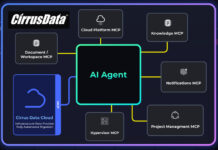COMMISSIONED: Organizations must consider many things before deploying generative AI (GenAI) services, from choosing models and tech stacks to selecting relevant use cases.
Yet before most organizations begin to tackle these tasks, they must solve perhaps their biggest challenge of all: their data management problem. After all, managing data remains one of the main barriers to creating value from GenAI.
Seventy percent of top-performing organizations said they have experienced difficulties integrating data into AI models, according to recent McKinsey research. These organizations experience issues with data quality, defining processes for data governance and having sufficient training data, McKinsey said. This can increase risks for organizations pursuing GenAI initiatives.
Getting your data house in order is table stakes for fostering AI capabilities while protecting corporate IP. But where do you start? And what data management and governance options are available?
Prioritize data quality and governance
Boosting data quality is a logical starting point. Large organizations are awash in data that could be useful for GenAI models and their resulting applications. However, the quality of data is often too poor to use without some corrections. Data, which is often siloed across different business functions, often includes wrong, outdated or even duplicative data.
This is par for the course in many organizations that have generated enterprise data over the years. However, using such disorganized data can wreak havoc on models, leading to bad outcomes, hallucinations and risk to corporate reputation. Remember, this is your organization’s IP, so you need to protect it.
How you massage your data to get the right outcomes will vary based on your business requirements. However, many organizations opt to collect, clean, preprocess, label and organize their data prior to leveraging it for training models.
Data governance is a critical factor for protecting corporate IP as you build GenAI models and applications. You’ll institute guidelines addressing AI usage within the organization and determine approved AI tools and usage policies.
Key to this is articulating a formal training policy to educate employees on how to use GenAI services ethically and responsibly, as well as the risks associated with inputting sensitive content into restricted gen AI systems.
Ultimately, however, a critical component of a good governance strategy is keeping a human-in-the-loop at all times. After all, isn’t it about time your humans and machines learn to work together
Synthetic data gives you secure options
Cleaning and governing your data will be good enough for many organizations dabbling in GenAI technologies. However, others may need to take a more prescribed approach when it comes to protecting their corporate IP.
For example, some GenAI use cases may be tough to execute as the data can be hard to obtain. And many organizations can’t afford to use their actual data, which may include personally identifiable data. This is particularly true in regulated markets, such as financial services, healthcare and life sciences bound to stringent data protection rules.
As a result, some organizations have turned to GenAI to use synthetic data, which mimics real-world patterns without exposing sensitive personal information. This can help you test data and see potential desirable outcomes.
It isn’t perfect; after all, the data is made up. But it may serve as a reasonable proxy for achieving your outcomes.
The unstructured data challenge
GenAI services produce unstructured data, such as PDFs, audio and video files, complementing the structured data stored in databases. Too many organizations let raw data flow into their lakes without cataloguing and tagging it, which can denigrate data quality.
Organizations typically wrangle the data with disparate tools and approaches, which challenges their ability to scale their initiatives.
To streamline their efforts, more organizations are turning to a data lakehouse, which is designed to work with structured and unstructured data. The data lakehouse abstracts the complexity of managing storage systems and surfaces the right data where, when and how it’s needed.
Dell offers the Dell Data Lakehouse, which affords your engineers self-service access to query their data and achieve outcomes they desire. The solution uses compute, storage and software in a single platform that supports open file and table formats and integrates with the ecosystem of AI and ML tools.
Your data is your differentiator and the Dell Data Lakehouse respects that by baking in governance to help you maintain control of your data and adhere to data sovereignty requirements.
The Dell Data Lakehouse is part of the Dell AI Factory, a fungible approach to running your data on premises and at the edge using AI-enabled infrastructure with support from an open ecosystem of partners. The Dell AI Factory also includes professional services and use cases to help organizations accelerate their AI journeys.
While organizations prefer their GenAI solutions to be plug-and-play, the reality is you’ve got to grab your shovel and come to work ready to dig through your data, prepare it to work with your models and protect it. Is your organization up to the task?
Brought to you by Dell Technologies.








